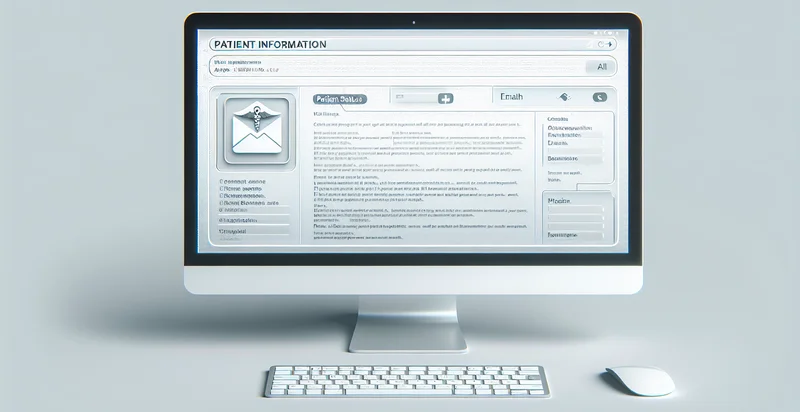Identify if patient id is in an email
using AI
Below is a free classifier to identify if patient id is in an email. Just input your text, and our AI will predict if the patient ID is included in the email - in just seconds.

Contact us for API access
Or, use Nyckel to build highly-accurate custom classifiers in just minutes. No PhD required.
Get started
import nyckel
credentials = nyckel.Credentials("YOUR_CLIENT_ID", "YOUR_CLIENT_SECRET")
nyckel.invoke("if-patient-id-is-in-an-email", "your_text_here", credentials)
fetch('https://www.nyckel.com/v1/functions/if-patient-id-is-in-an-email/invoke', {
method: 'POST',
headers: {
'Authorization': 'Bearer ' + 'YOUR_BEARER_TOKEN',
'Content-Type': 'application/json',
},
body: JSON.stringify(
{"data": "your_text_here"}
)
})
.then(response => response.json())
.then(data => console.log(data));
curl -X POST \
-H "Content-Type: application/json" \
-H "Authorization: Bearer YOUR_BEARER_TOKEN" \
-d '{"data": "your_text_here"}' \
https://www.nyckel.com/v1/functions/if-patient-id-is-in-an-email/invoke
How this classifier works
To start, input the text that you'd like analyzed. Our AI tool will then predict if the patient ID is included in the email.
This pretrained text model uses a Nyckel-created dataset and has 2 labels, including Patient Id Absent and Patient Id Present.
We'll also show a confidence score (the higher the number, the more confident the AI model is around if the patient ID is included in the email).
Whether you're just curious or building if patient id is in an email detection into your application, we hope our classifier proves helpful.
Related Classifiers
Need to identify if patient id is in an email at scale?
Get API or Zapier access to this classifier for free. It's perfect for:
- Patient Data Privacy Compliance: This use case focuses on ensuring that patient IDs are not disclosed in email communications. By identifying instances where patient IDs appear, organizations can take appropriate action to safeguard sensitive information, thereby adhering to regulations like HIPAA.
- Automated Risk Assessment: Implementing this classification function can help healthcare organizations automatically assess risk in email communications. By tracking and flagging emails containing patient IDs, the system can prioritize those that require immediate attention for security audits or breach prevention.
- Enhanced Email Filtering: This use case allows organizations to filter emails containing patient IDs for better management. By streamlining email workflows and focusing on sensitive data, staff can prioritize communication and reduce the risk of handling confidential information improperly.
- Consent Management Notifications: In scenarios where patient IDs are present in emails, it may trigger notifications for consent management processes. Organizations can automatically ensure that proper patient consents are obtained before sharing any sensitive information, reinforcing ethical communication practices.
- Audit Trail Generation: This function can support the creation of an audit trail by logging instances of patient ID disclosures in emails. This helps organizations maintain transparency and accountability within their email communications, which is crucial during regulatory audits.
- Enhanced Patient Communication Tracking: By identifying patient IDs in emails, healthcare providers can enhance their tracking of communications with patients. This ensures that all interactions are coherent and relevant to the patient's medical history, leading to improved patient care and satisfaction.
- Compliance Training Insights: Tracking patient IDs in emails can serve as valuable data for compliance training programs. By identifying frequent occurrences, organizations can better tailor their training materials and sessions to address specific vulnerabilities related to patient information handling.


